Summer sewing: the white jumpsuit
For once I didn’t sew only dresses this summer, I also ventured into their trousers equivalent: the jumpsuit. And since I am a big lover of summer whites (even more so since I discovered Vanish Oxi Action to remove sun cream stains), my summer jumpsuit had to be white.
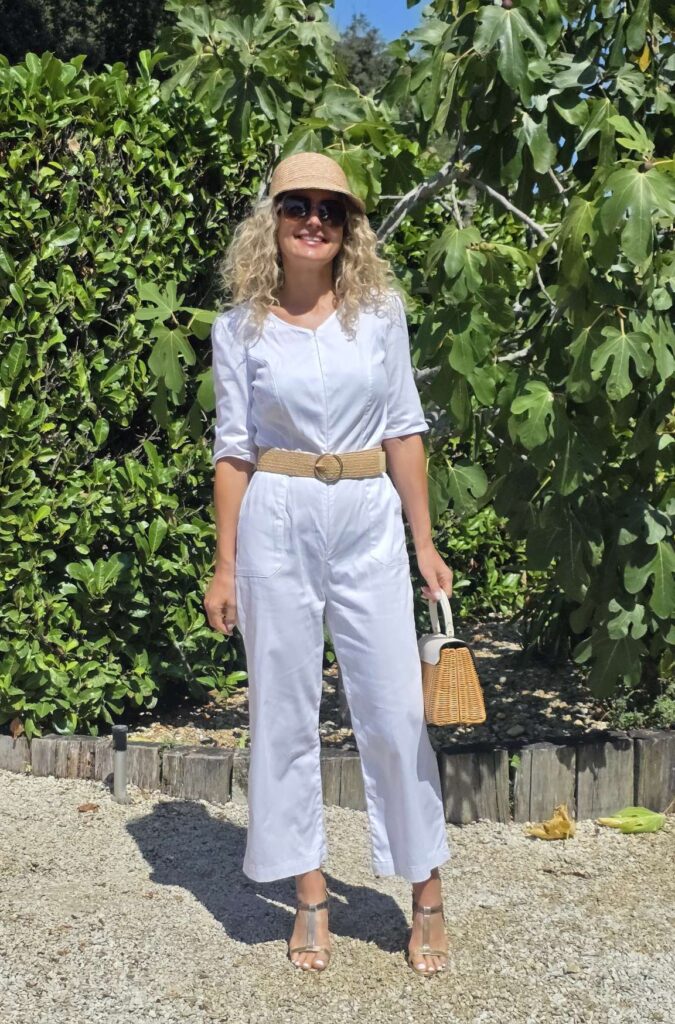
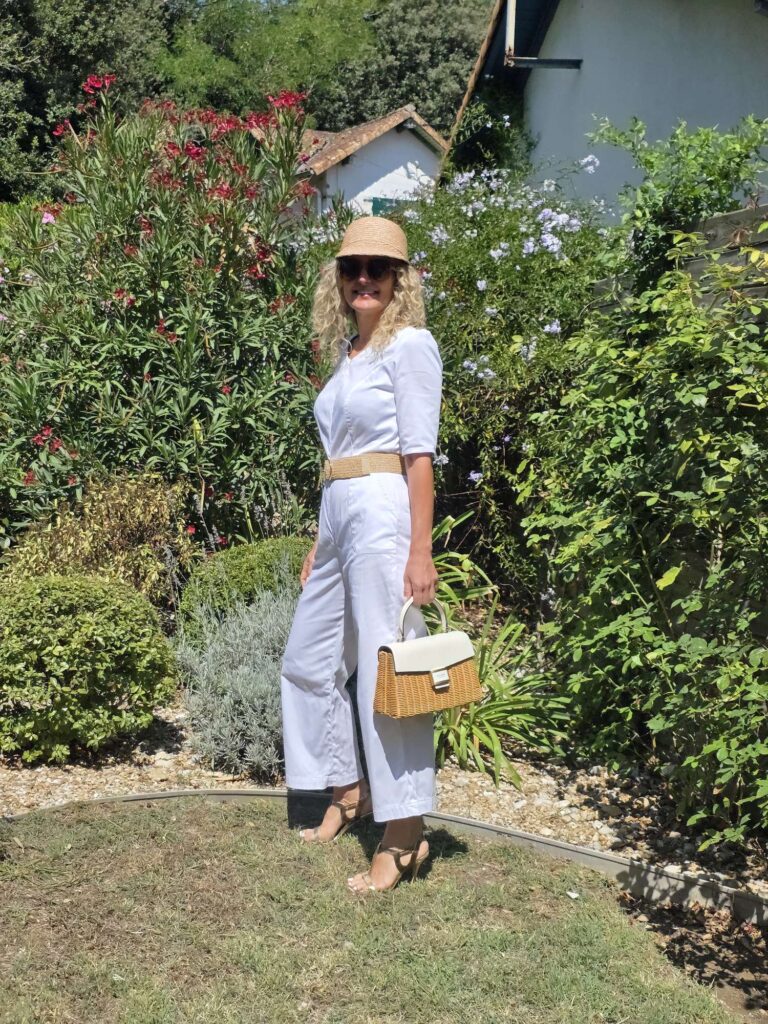
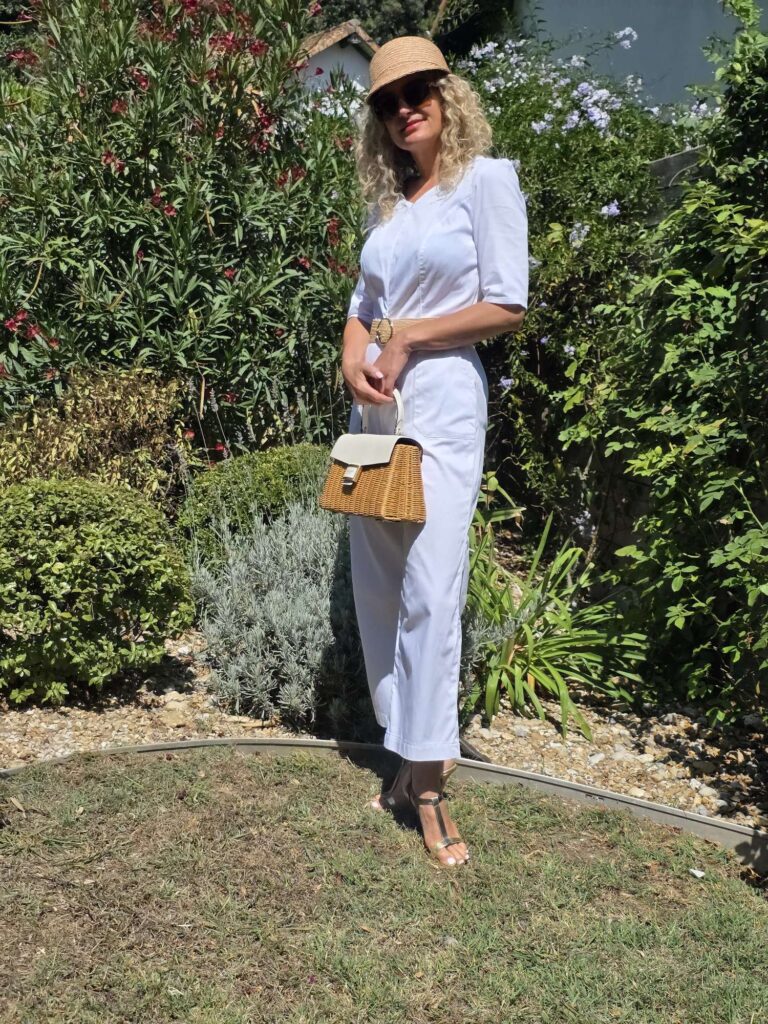
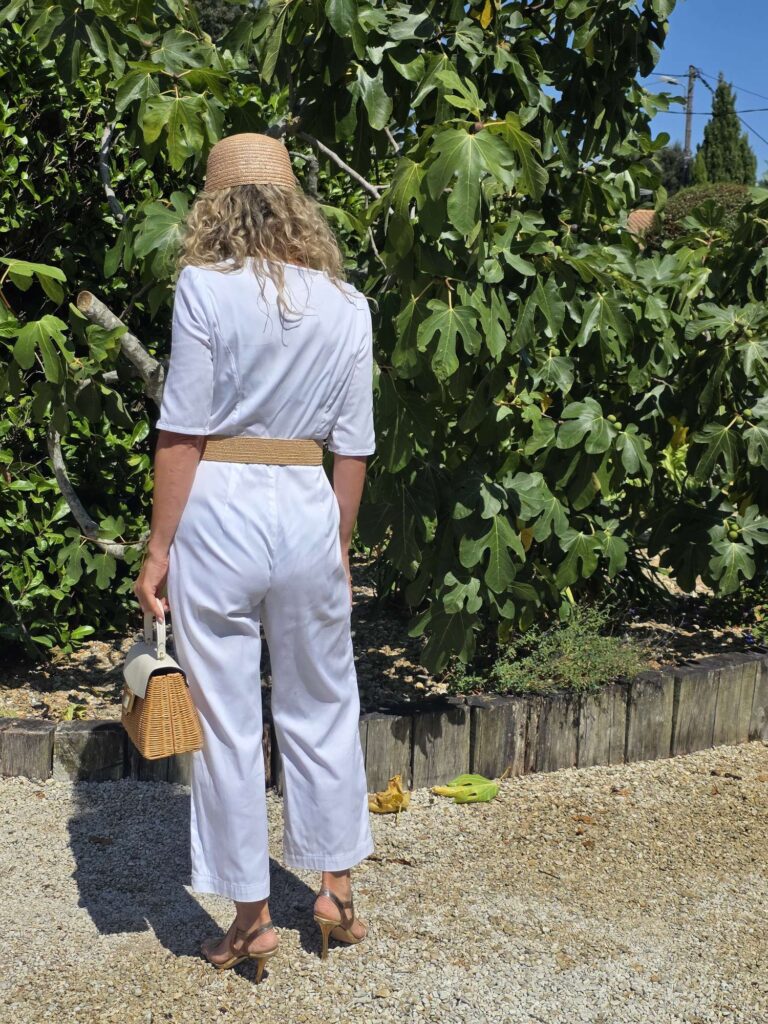

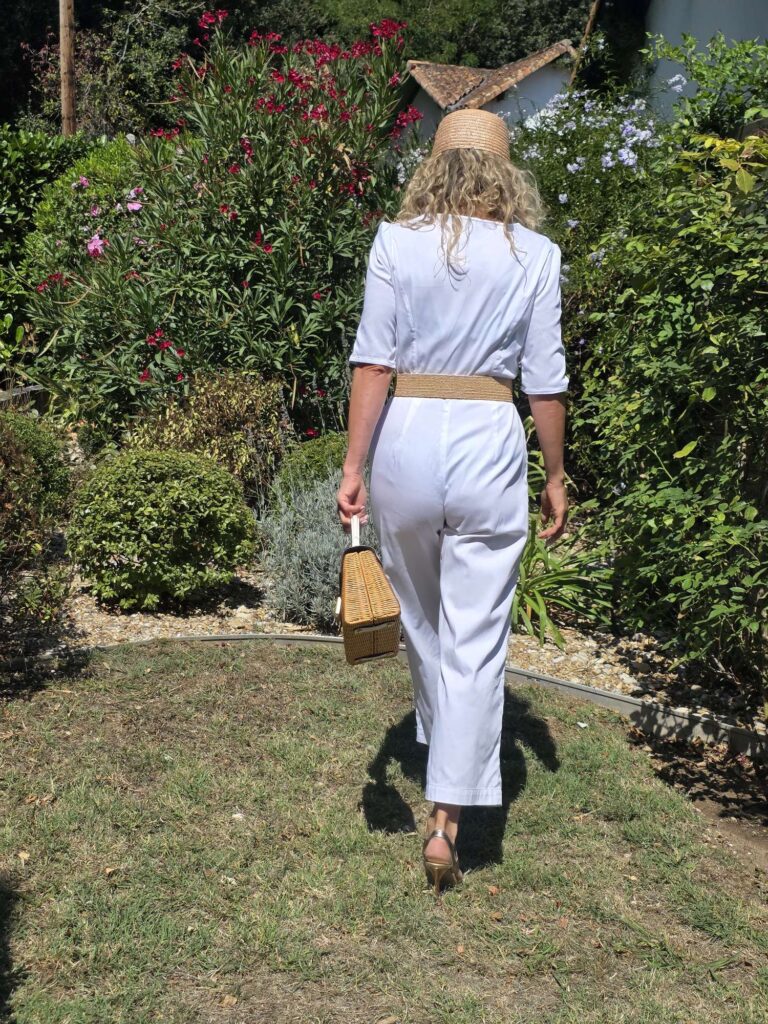

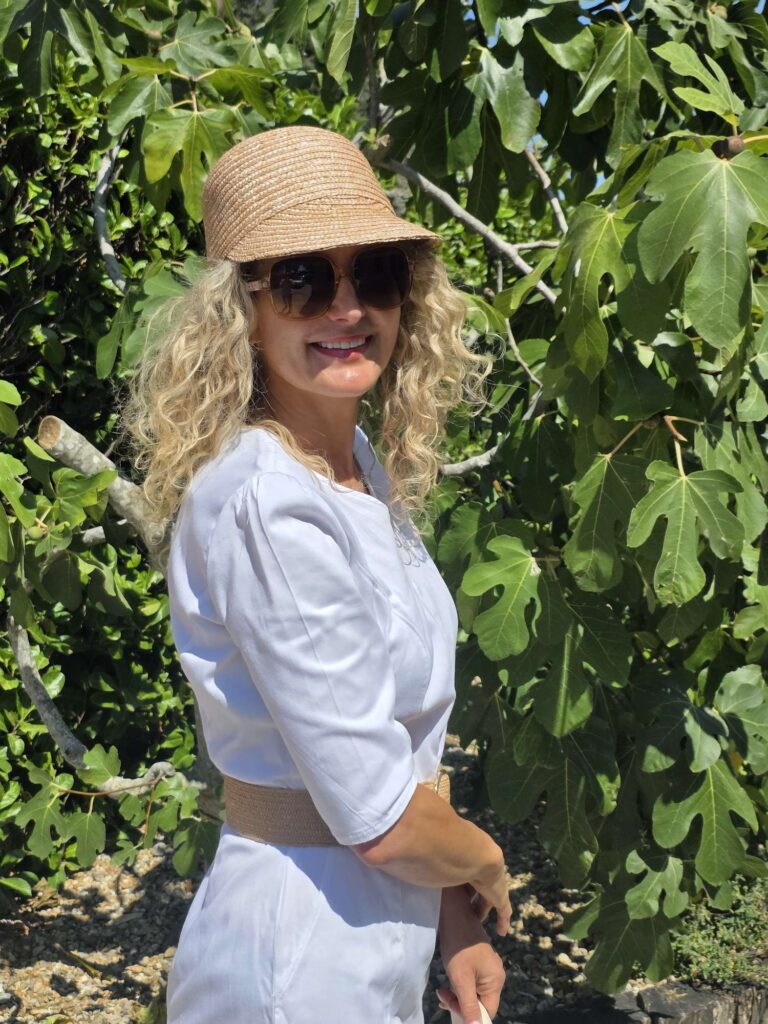
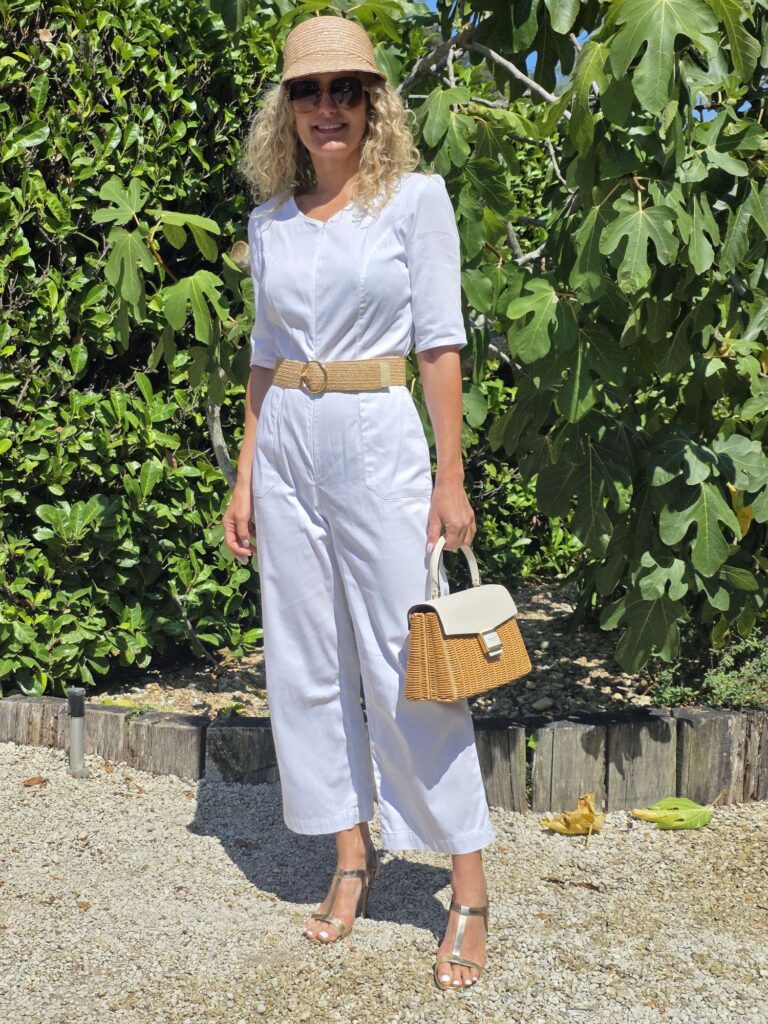
Pattern: I used the McCall7908/ M7908 pattern, which I had already sewn (three times) and reviewed here four years ago (how time flies).

I had gone through a fitting ordeal then so I was keen to reuse this pattern ad-nauseam. But I only got the pattern out of its envelope this winter for 3 winter versions (long sleeves, long legs) – I seem to only sew this pattern in bulk! Do not hold you breath for pictures, my blogging apnoea means I took exactly none!
Sizing: size 10 for my UK 8/ FR 36/ US 2, this is my standard size for Vogue/Butterick/ McCall’s/ Simplicity patterns, despite the size chart telling me I should be a 12/14. However I made a HUGE number of adjustments to have this jumpsuit fit me properly, explained in details here. Jumpsuits are usually a minefield for me, as I have a long torso (and short legs, to my great despair), and this one was no exception.
Changes to the pattern: I made a large number of fitting adjustments: lengthening the torso by 3cm/ adding 1cm width at the hips/ slightly reducing the crotch length/ taking a bit of width off the back both at the trousers top and the bodice bottom (swayback adjustment). And then I lost weight after sewing my jumpsuit and it is now a bit too loose but never mind! The other change I made was to replace the exposed font zip with a concealed one, I never quite understood how to neatly sew the exposed zip, and in any case I find a concealed one much more elegant. Lastly I changed the neckline from a V to a round shape.
Level of difficulty: I would classify this pattern as intermediate due to the fitting struggle and the obscure installation of the exposed zip.
Fabric used: I used a lightweight denim-like fabric in a glorious white cotton from Croftmill, which is still available here. It has a bit of stretch, which I would strongly advise for this jumpsuit despite the instructions advocating plain-vanilla woven fabric.
Likes: there are quite a few things I really like about this jumpsuit (which, given it is my 7th version, I am sure you had guessed):
- I really like the shape, with its fitted bodice and waist and its 7/8th wide leg trouser;.
- It is super easy to put on and off, thanks to its long front zip.
- Once you have worked out all the adjustments you need to make, it is a very quick and easy make. The only technical difficulty is the zip and here I would strongly recommend replacing the exposed zip by a concealed one.
- This pattern has really nice details, such as the visible front zip (if you keep it) and the pockets.
- It offers bust cup options, which I am always a huge fan of as it prevents me from having to make a FBA.
Dislikes: unfortunately I don’t think I have had so many dislike for a pattern for a while (that said I nearly solely make dresses so they are not the same challenge):
- The fitting effort needed is a terrible hassle and the fact that the torso is so short is just really annoying.
- The instructions are completely hopeless for the insertion of the zip. If you follow them you should cut into your fabric right at the beginning of the process, risking the fabric to tear when you try on the fit before installing the zip. I still haven’t understood them…
- The pockets do not align to the bodice seams in all sizes. For my size 10 it just about worked (and I think the envelope picture much be in a similar size). However if you look at the illustrative drawings and if you read bigger size reviews, the alignment does not work – huge pity! I would definitely advise to redraw the pockets to reach alignment.
- The order of assembly in the instructions is not very helpful for a garment which requires so much fitting. You are supposed to first put the top together, then the bottom, then join them together; and you topstitch as you go. I assembled this jumpsuit (and all its previous versions) in a completely different way : 1/ join back top and bottom – check the darts alignment; 2/ join front top and bottom – check the darts alignment; 3/ join back and front together – check fit and then topstitch; 4/ install zip.
Conclusion: despite all my reservations I really like this jumpsuit. I’ve worn it loads over the past few months and it has made me really keen to expand my jumpsuit sewing skills – I just need to brace myself for a lot of fitting work…
Summer sewing: another day, another palm tree dress
Let’s surf on this incredible wave of motivation and continue the presentation of my summer dresses! More border print, more palm trees, but a different pattern this time:

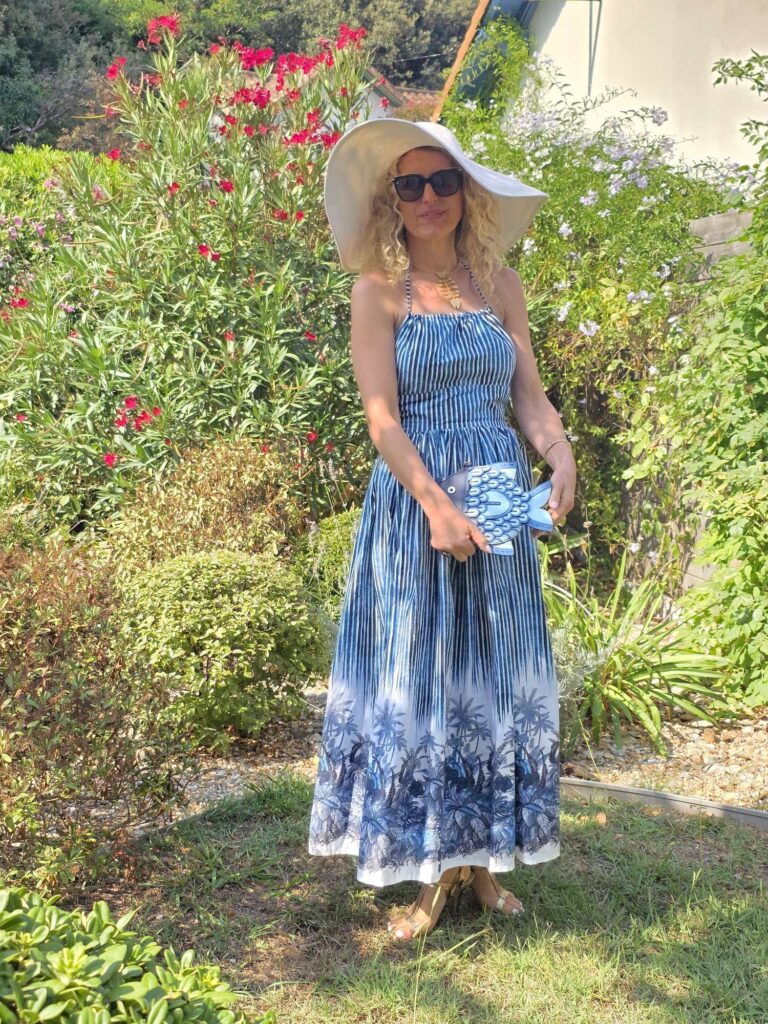
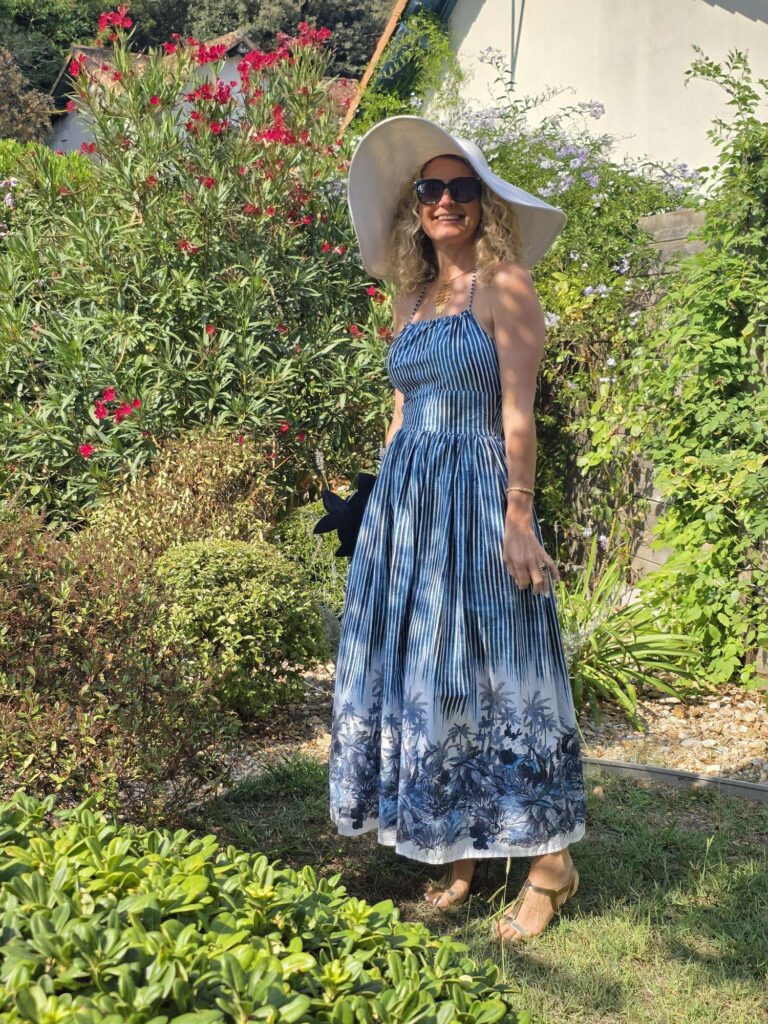
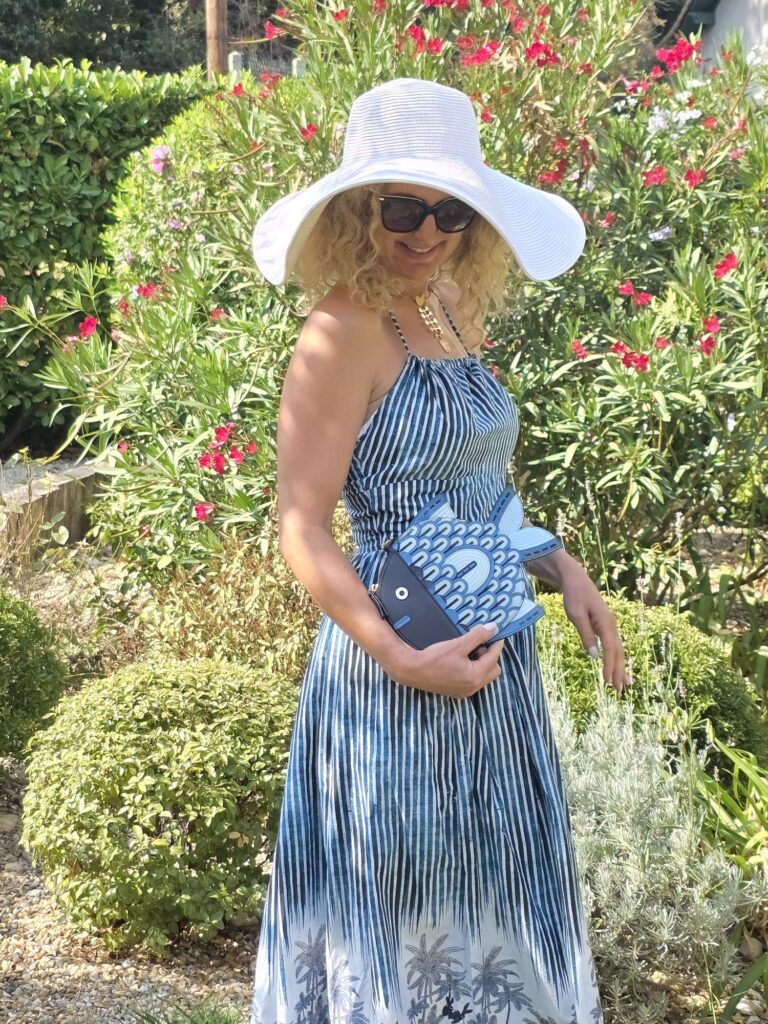
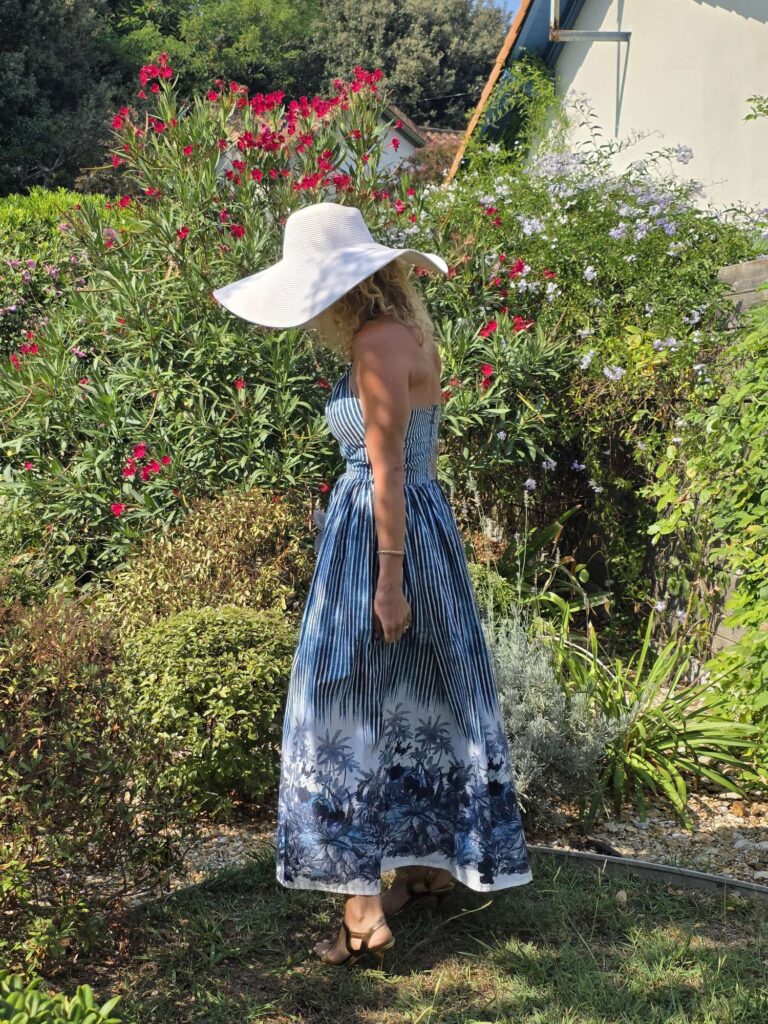
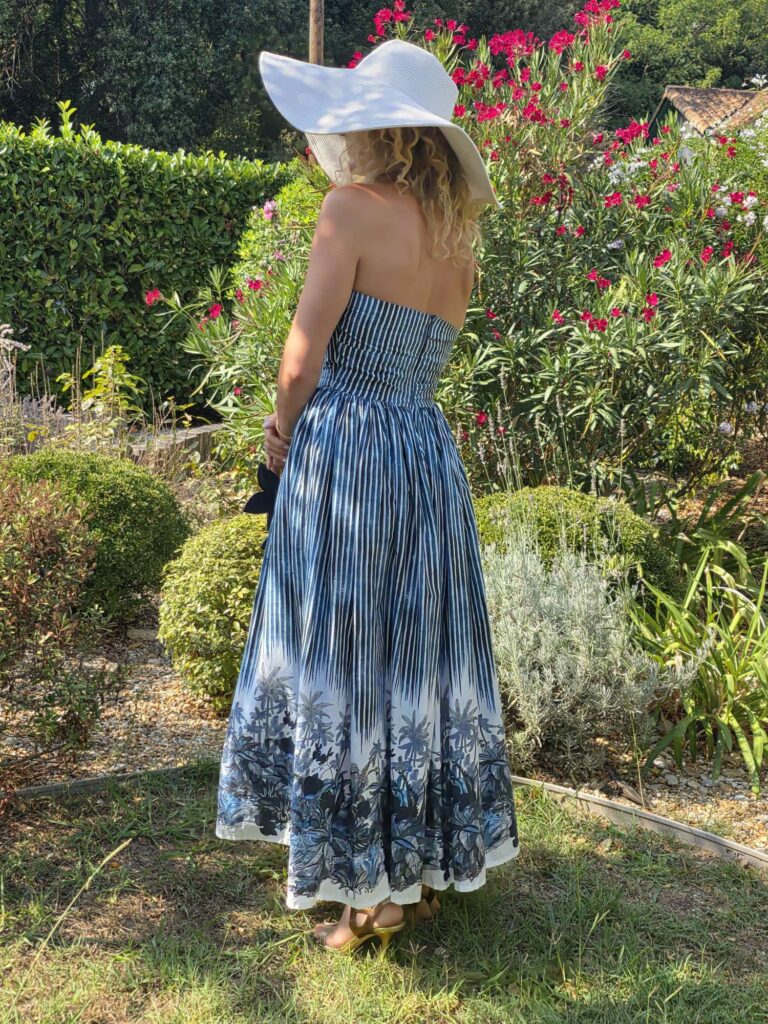
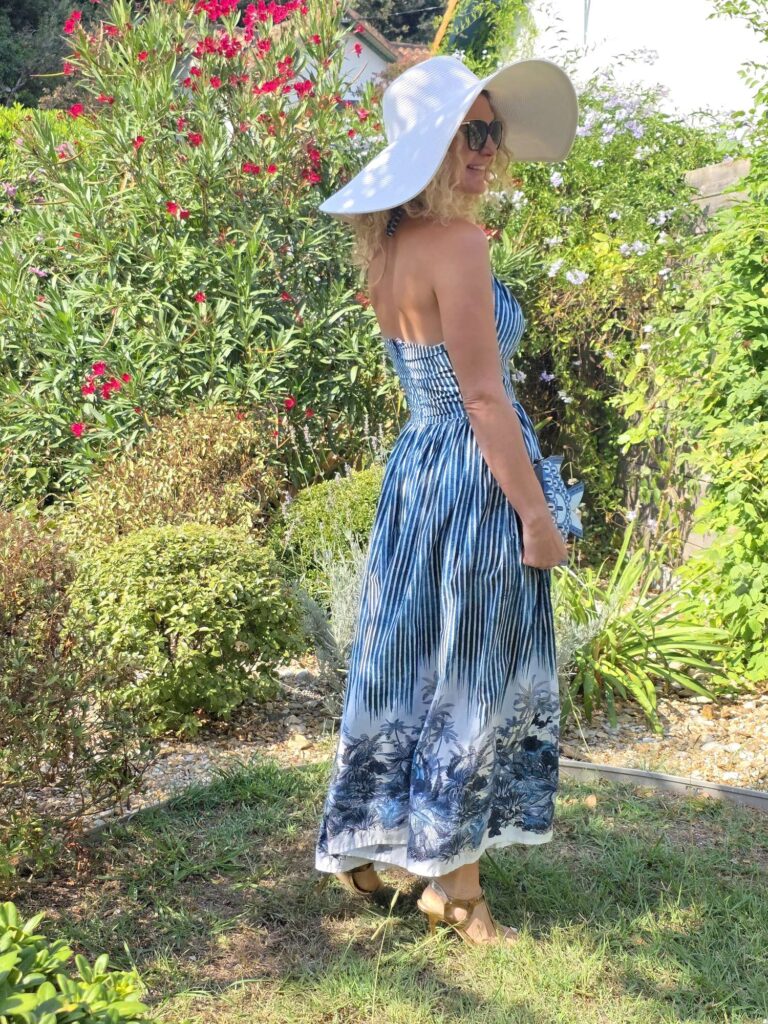
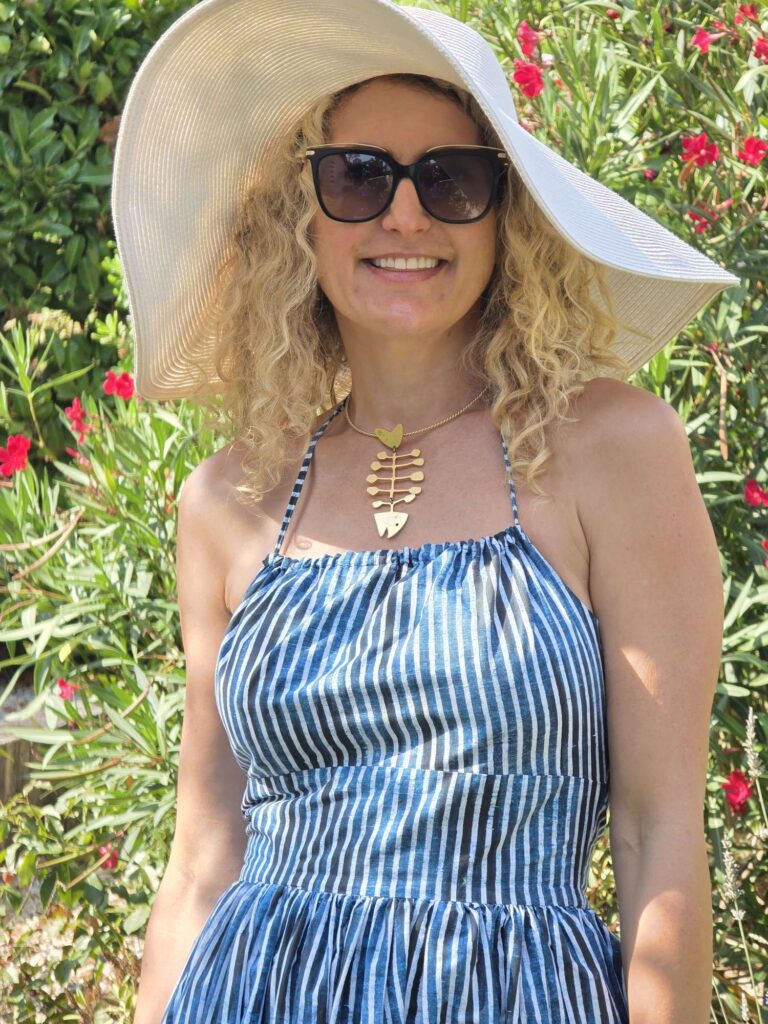
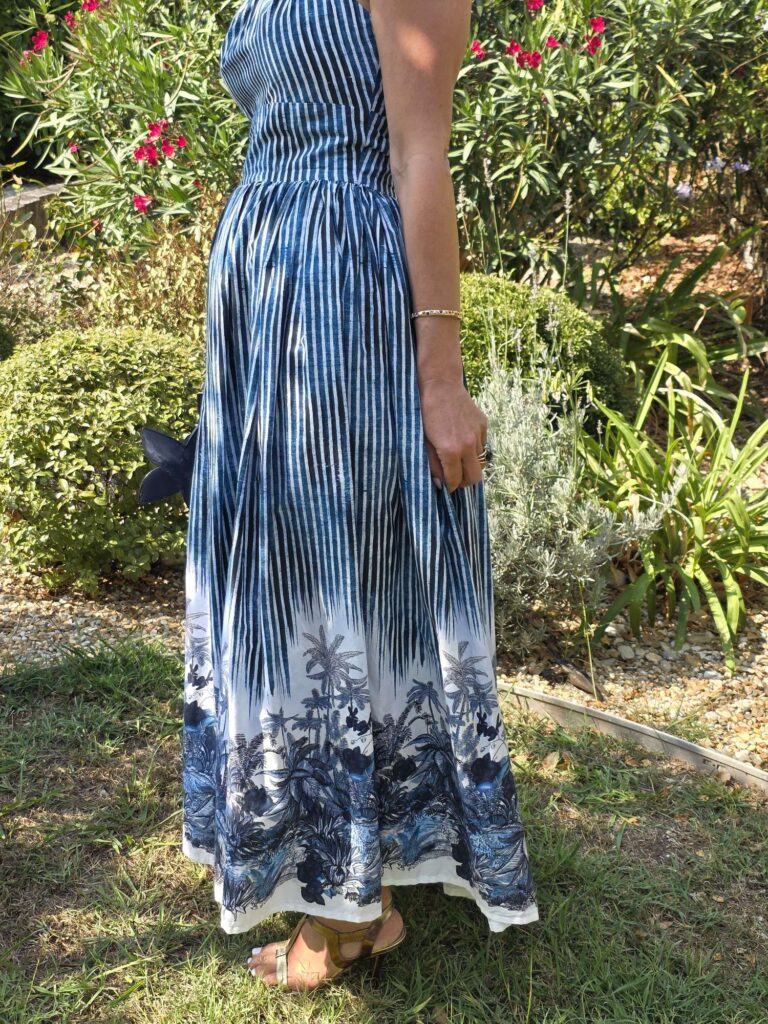
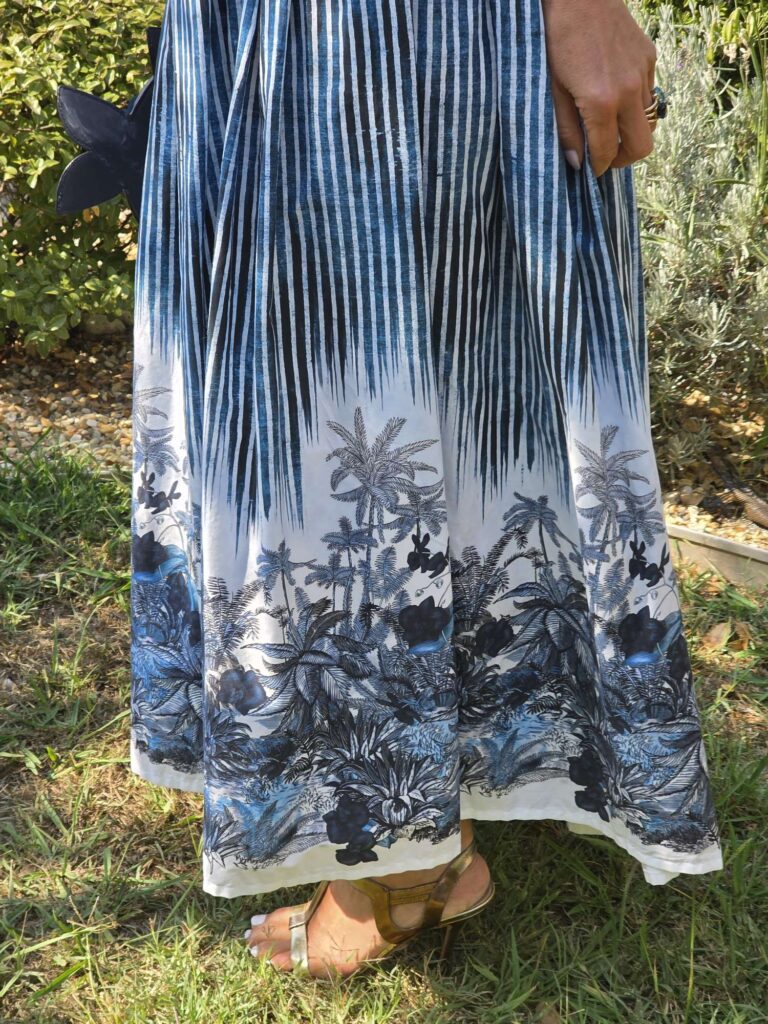
Pattern Used: I used M8211, which I had already sewn three times: twice in the sleeveless version here and here, twice in the puff sleeves version here. I had loved my first sleeveless version (with the long skirt) so much that I was very keen to reiterate – it only took my three years!
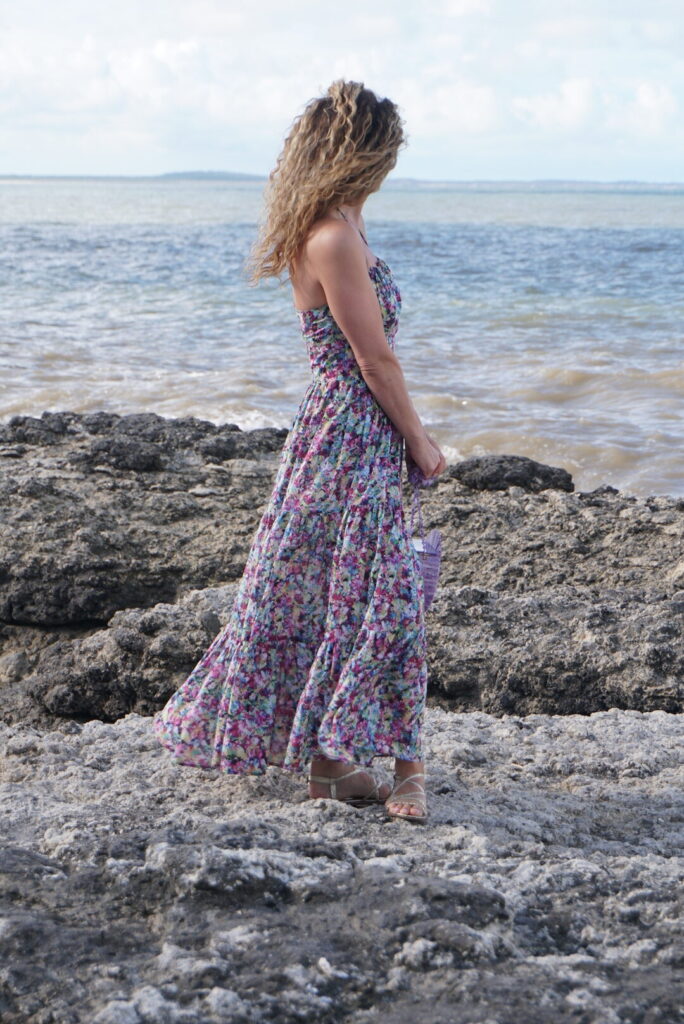

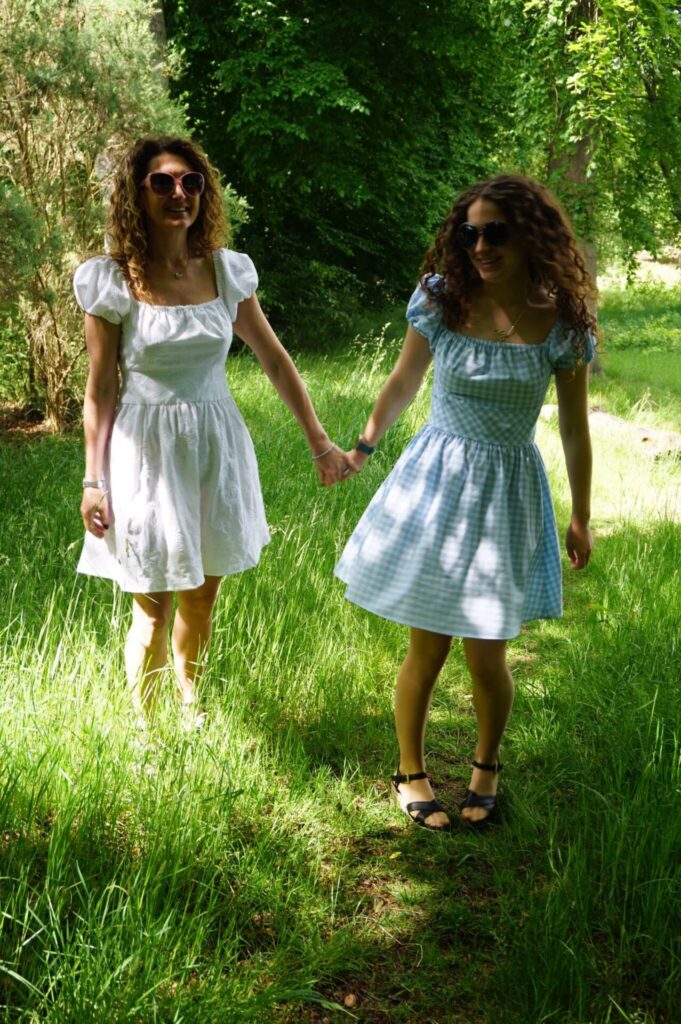
Sizing: size 10 for my UK 8/ FR 36/ US 2, this is my standard size for Vogue/Butterick/ McCall’s/ Simplicity patterns, despite the size chart telling me I should be a 12/14. I am an E cup and did not need an FBA, the bodice front offers ample room for whatever size.
Level of difficulty: this is an extremely easy dress to sew, the bodice is really straightforward in the sleeveless version (less so in the puff sleeve version as you have to fiddle with elastic) .
Fabric used: a lightweight cotton with a gorgeous border print, purchased from Stofaholic on Instagram. Tatiania sources the most gorgeous designer fabrics, well worth the import trouble all the way from Denmark!
Changes to the pattern: for the bodice, I removed some fabric at the back as the top was slightly sagging (the waist was perfect). The skirt is self drafted, once again rectangles of fabric shirred at the waist, the keep the perfect border pattern intact.
Love rating: so pretty and comfy to wear on hot summer days! I am very pleased.
Summer sewing: the border print dress
Hot on the heels of the D&G-inspired summer dress, here come her little sister: the border print dress. Having figured out pattern placement with my previous dress, I could not help sewing exactly the same dress in a different fabric… Typical!
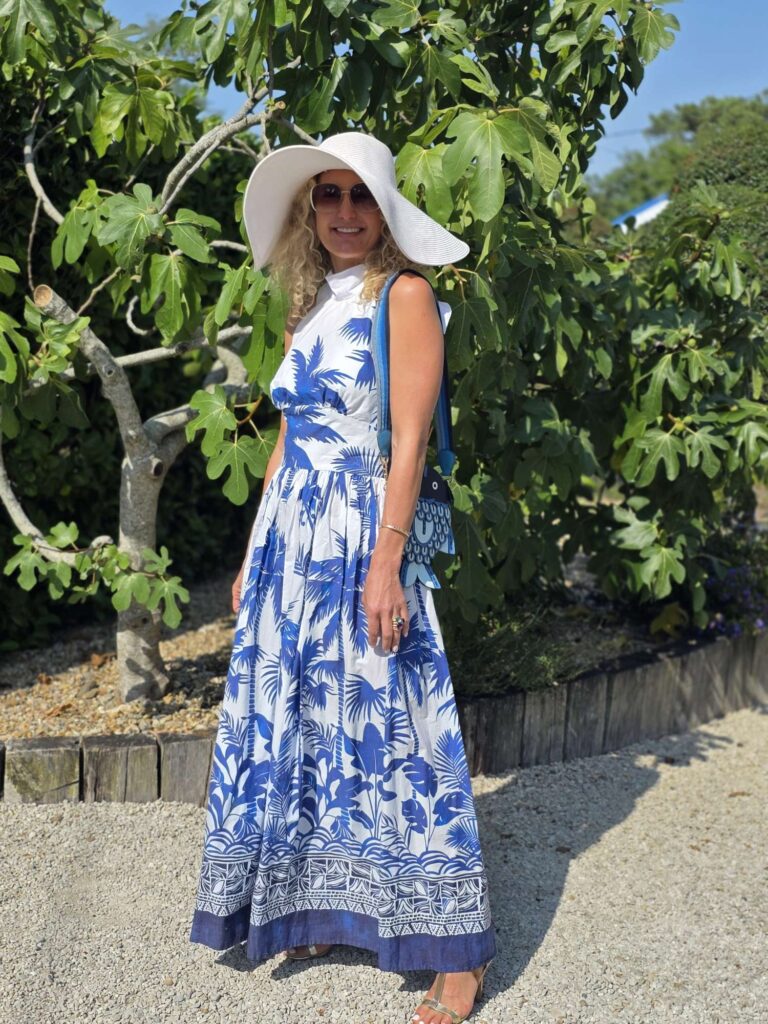
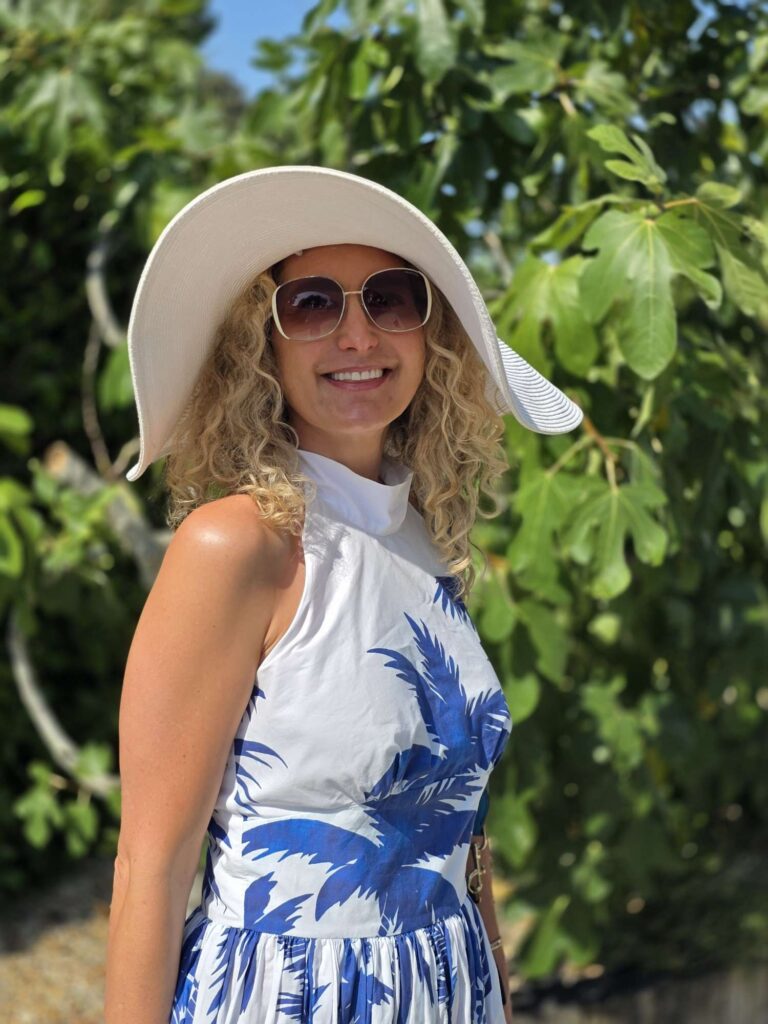
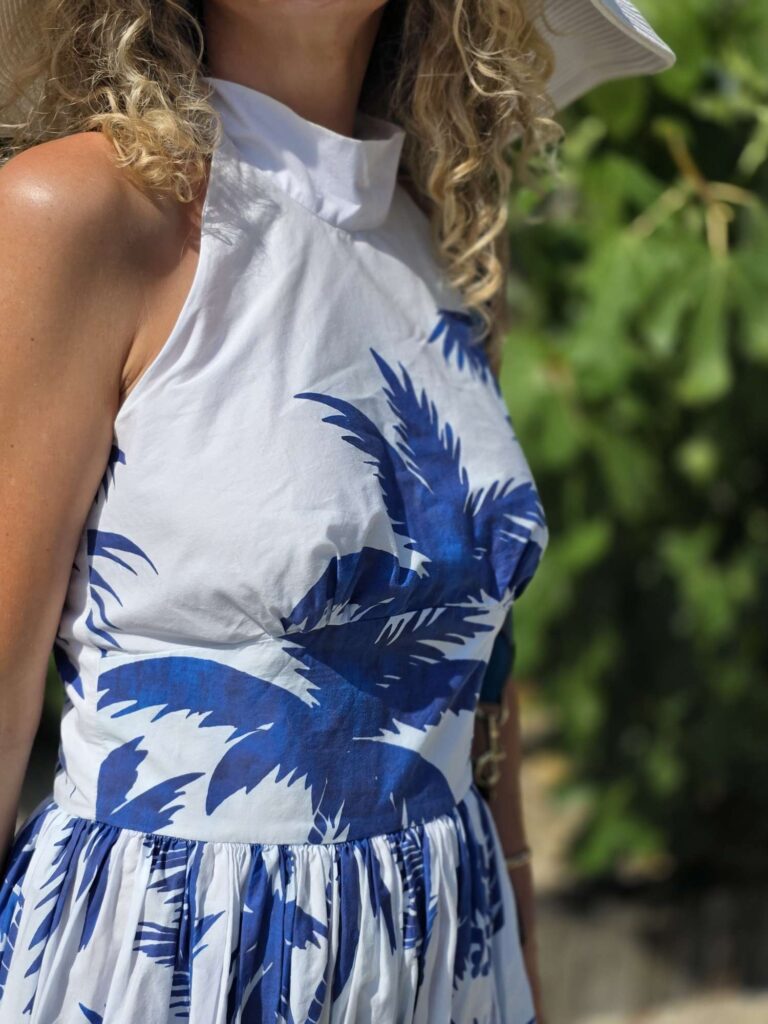
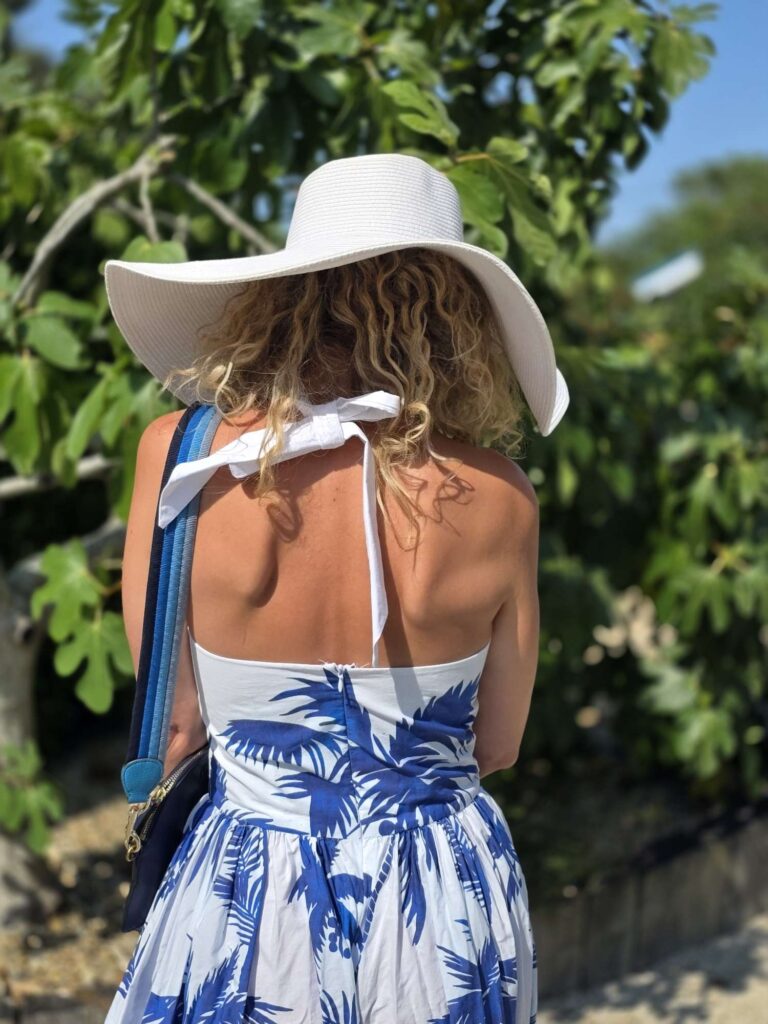
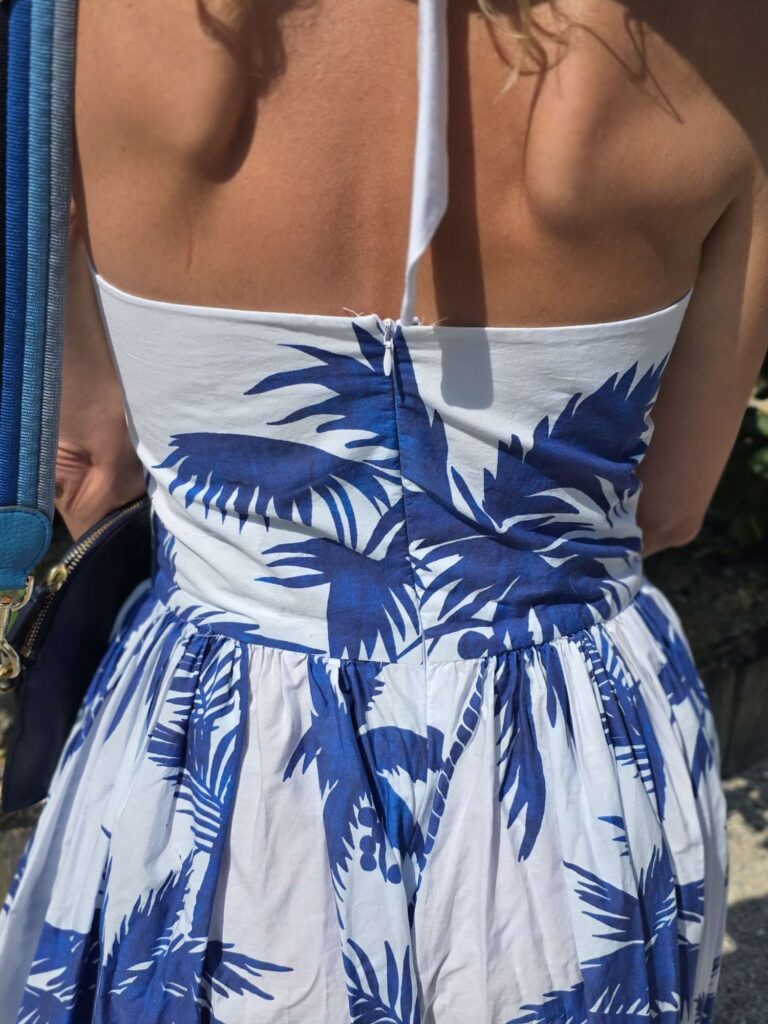

Pattern Used: for the bodice, view A of Simplicity 8645 (S8645), which is a 1950’s vintage re-edited top pattern. For the skirt I simply used two gathered rectangles (fabric width x length required, around 90cm here). I much prefer circle skirts to gathered one, but the gathered option in the only one that works with a border fabric like this one.
Sizing: size 10 for my UK 8/ FR 36/ US 2, this is my standard size for Vogue/Butterick/ McCall’s/ Simplicity patterns, despite the size chart telling me I should be a 12/14. I am an E cup and did not need an FBA.
Level of difficulty: easy but a bit of patience required as the bodice is entirely lined.
Fabric used: a lightweight cotton with a gorgeous border print, found on bennytex.fr. I find border print fabric very difficult to source in UK and France (much easier in the US), so I always get a bit overexcited when I find one!
Changes to the pattern: for the bodice I replaced the Peter Pan collar by a self-drafted scarf collar. I made not other changes to the pattern. The skirt is self drafted but frankly no rocket science here. I placed an invisible zip at the back, I did a bit of pattern matching for the bodice but not for the skirt.
Love rating: maybe sewing the exact same design as my D&G-inspired dress was not necessary, but this dress is very pretty and lovely to wear. The pattern is more casual so I tend to wear it in the day rather than to go out.
Summer sewing: the D&G-inspired dress
Clearly my sewing has been more regular than my blogging lately. With the summer nearly over, I am well overdue a review of my latest makes. So let’s get started with a dress I am so proud of: my Dolce&Gabbana-inspired dress.
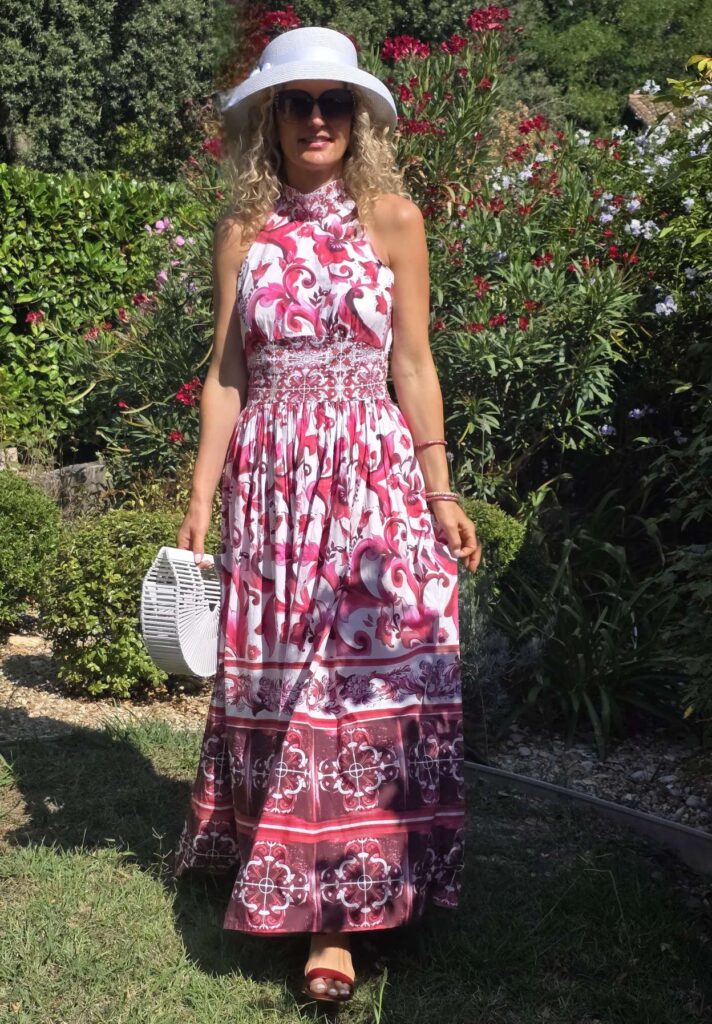
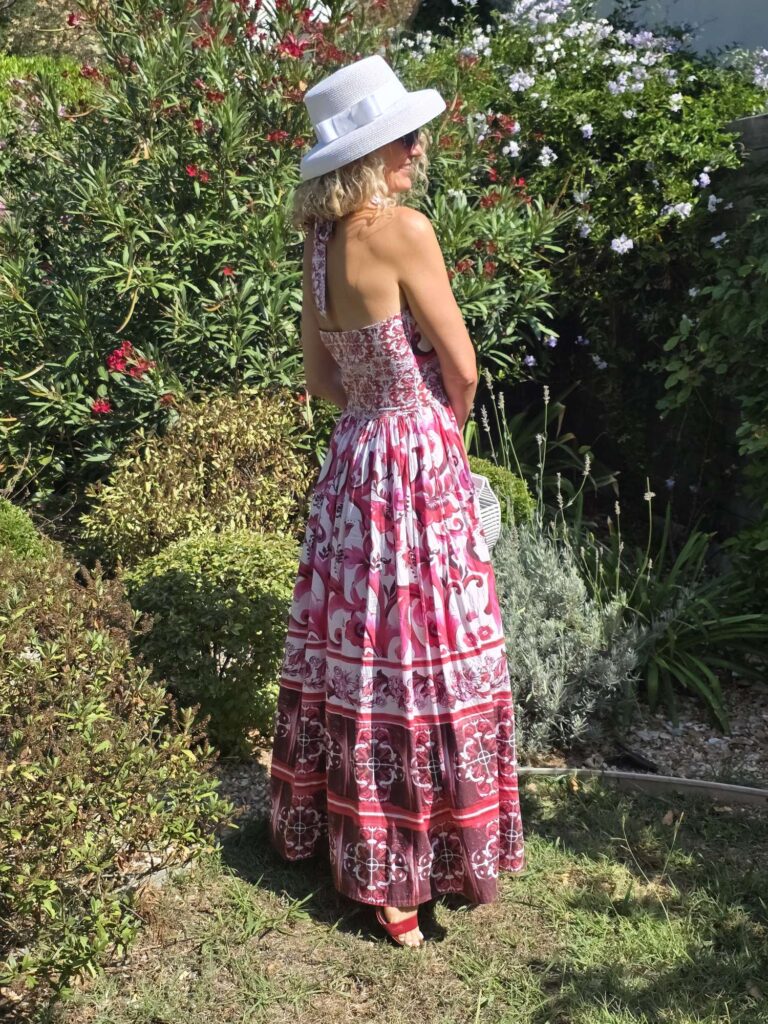
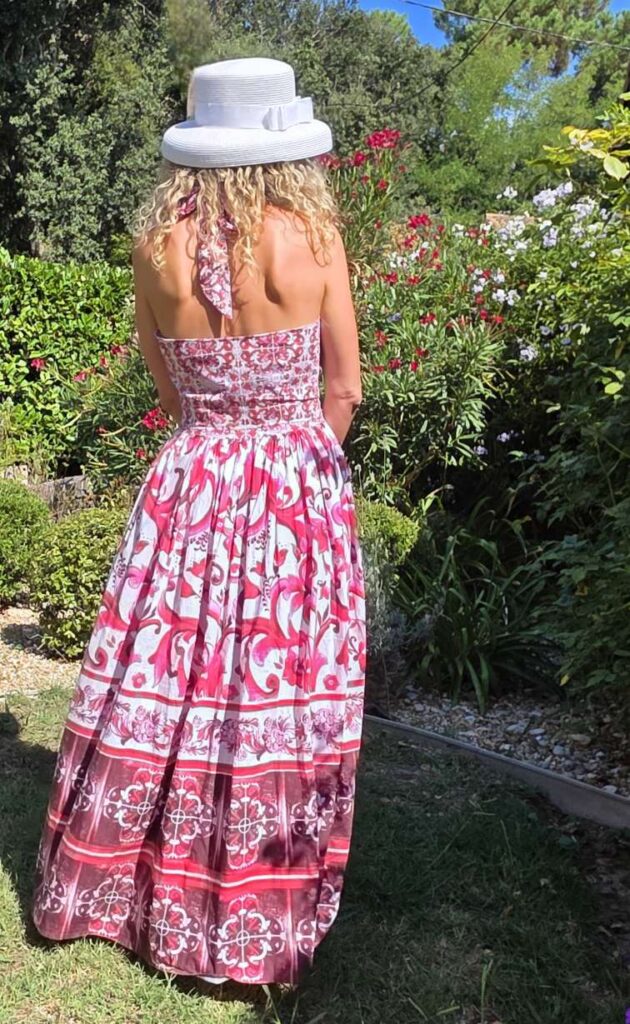
This dress is directly inspired from a dress by Dolce&Gabbana, which I first spotted on the amazing Instagram account WhatPeopleAreWearing…
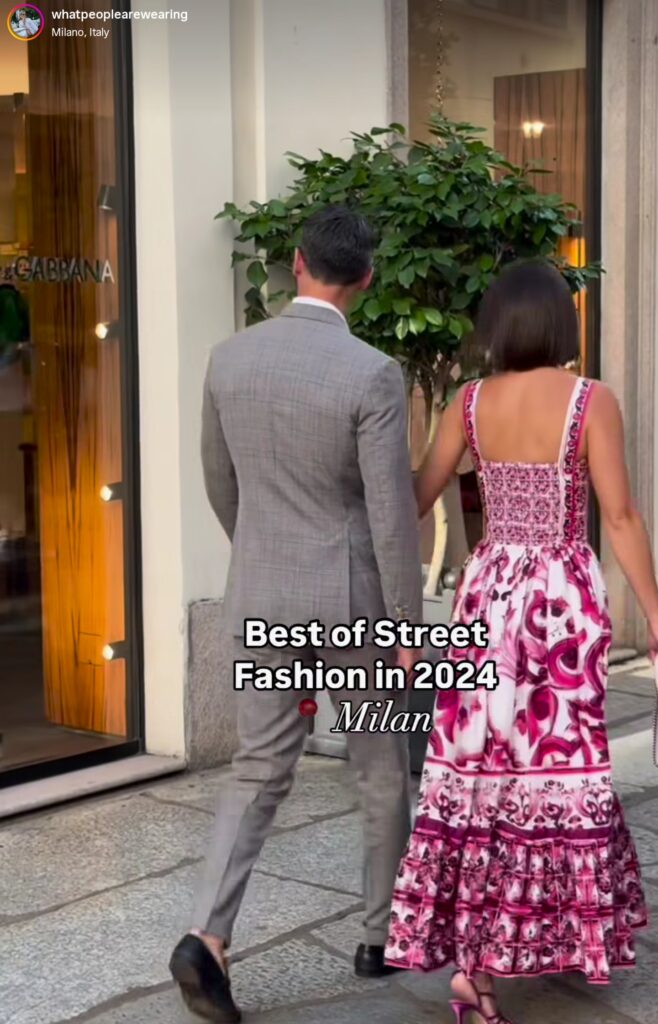
… and also screen-shot from the D&G website at the time.
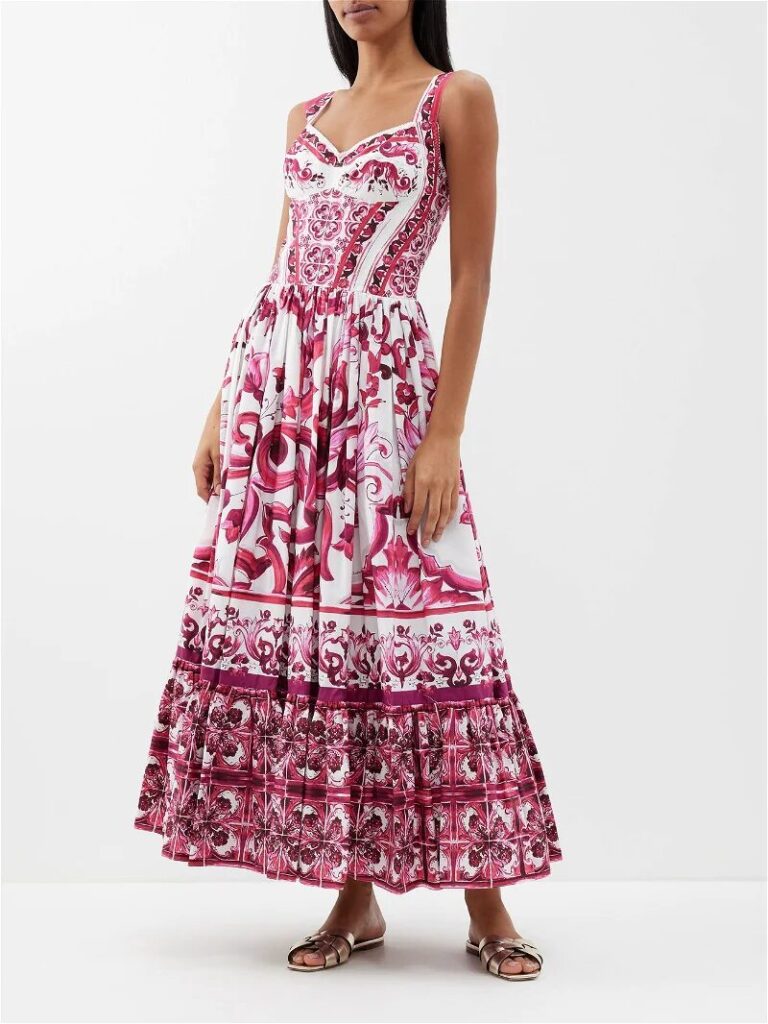
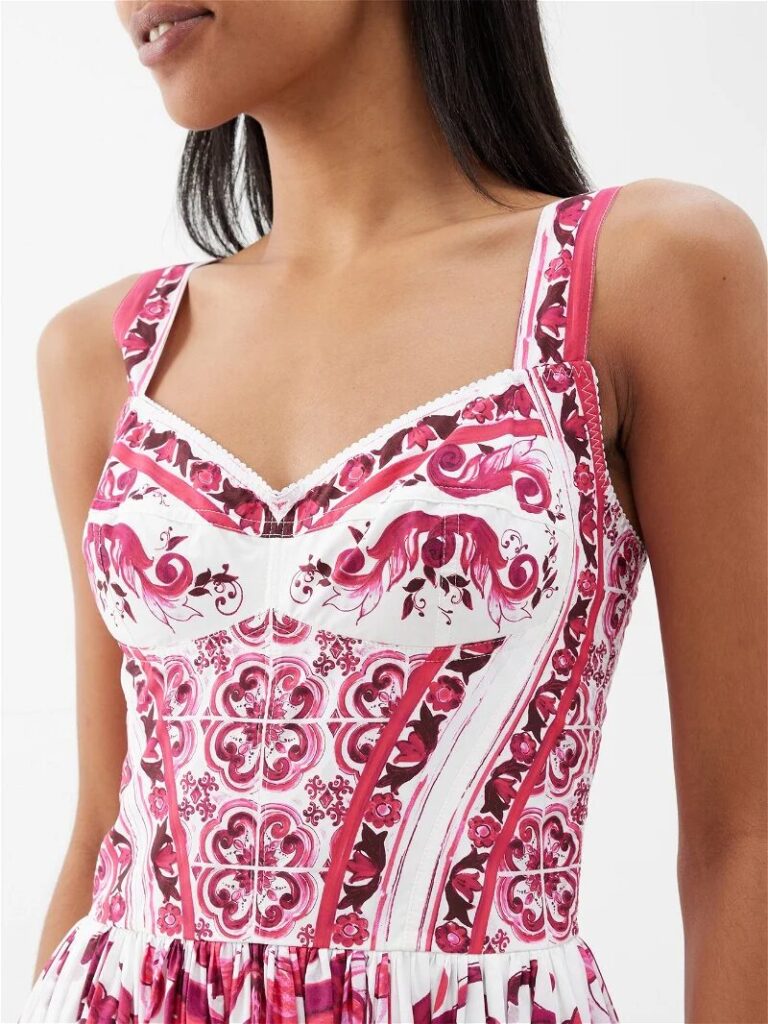
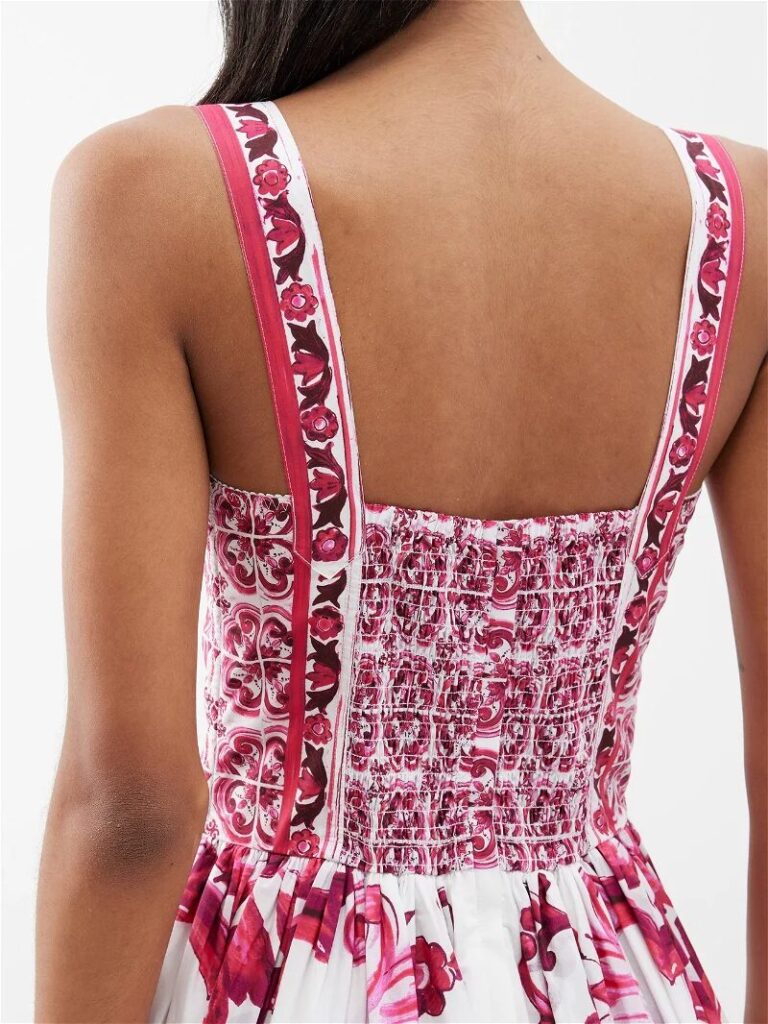
So clearly when the perfect fabric turned up at SelvedgeAndBolts, I immediately ordered as much as possible (4m I think), to allow room for pattern placement.
Pattern placement was indeed the big challenge of this dress. I pondered for ages on how to tackle this… until I got a lightbulb moment: just do what the designer did! And then everything became much easier.
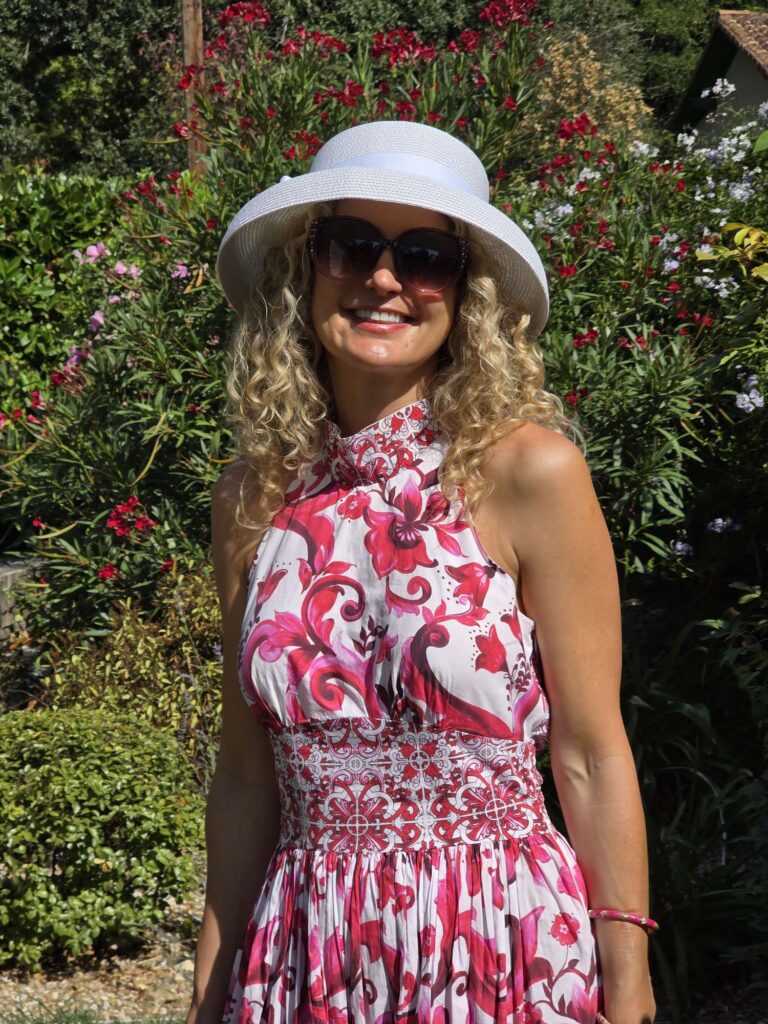
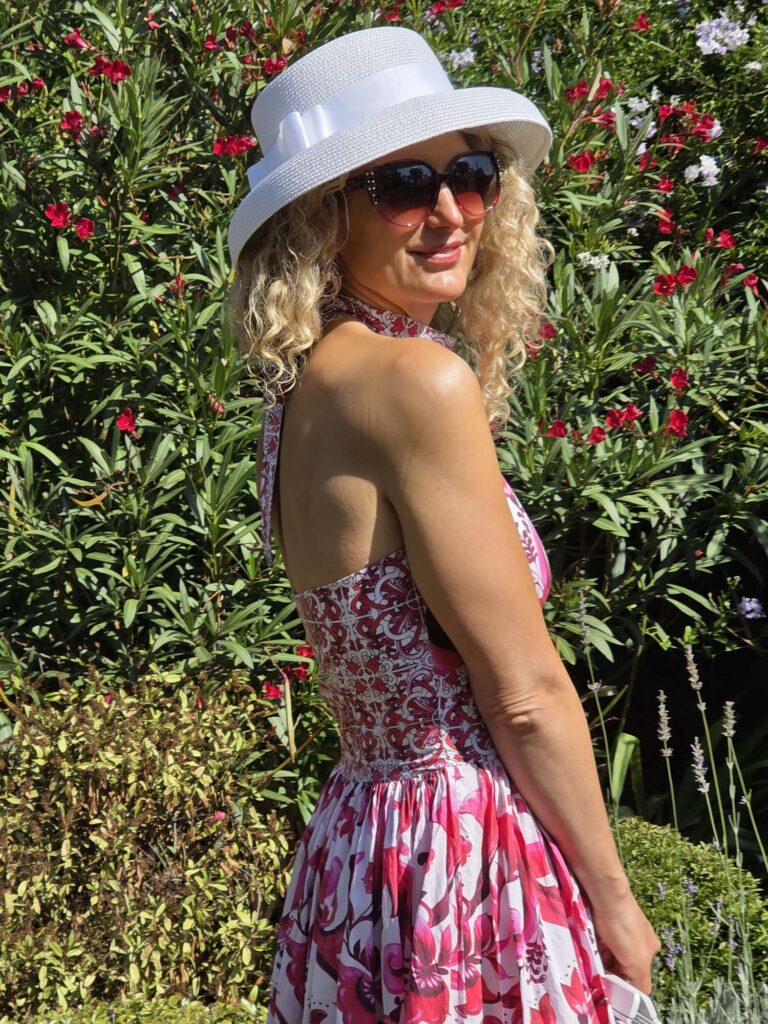

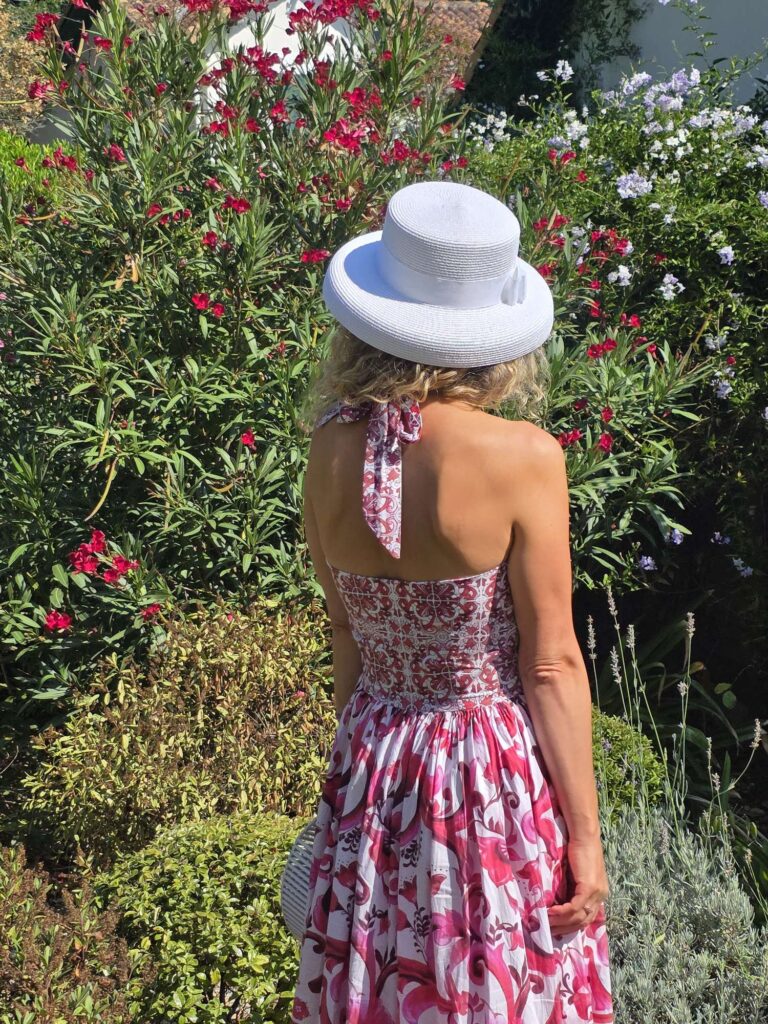

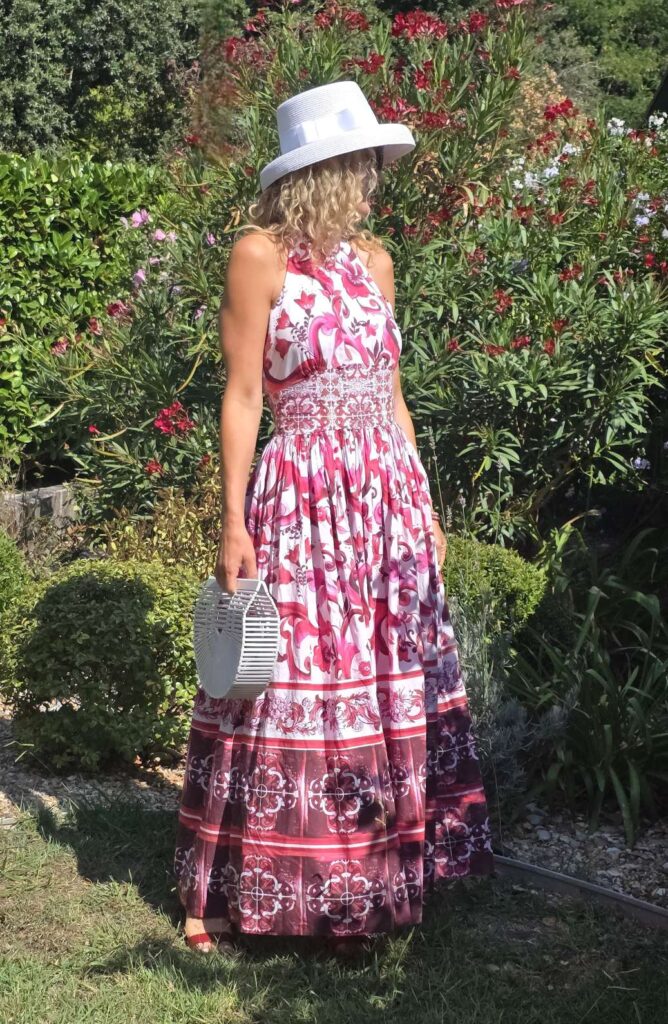
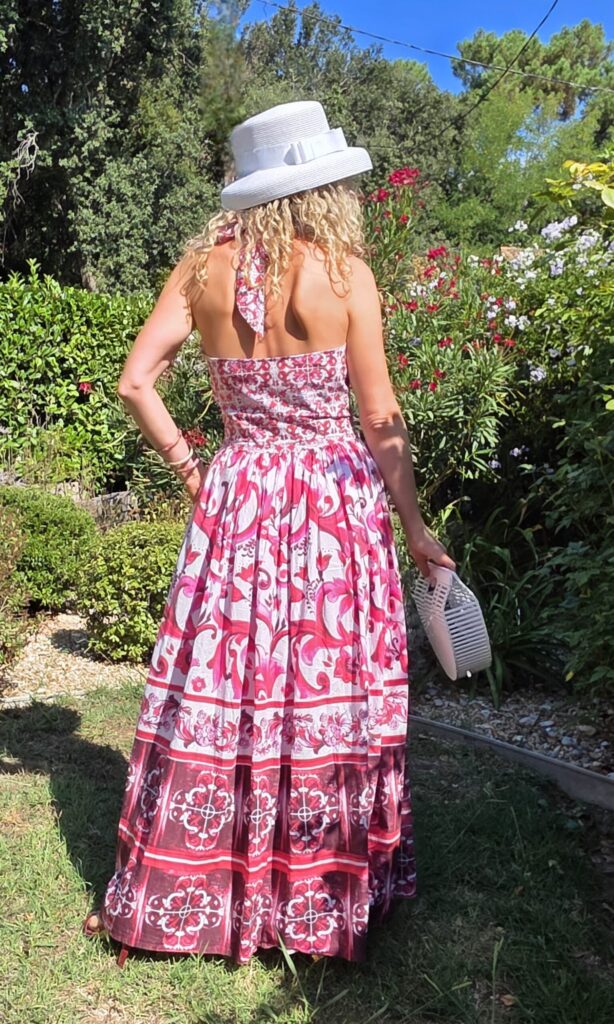

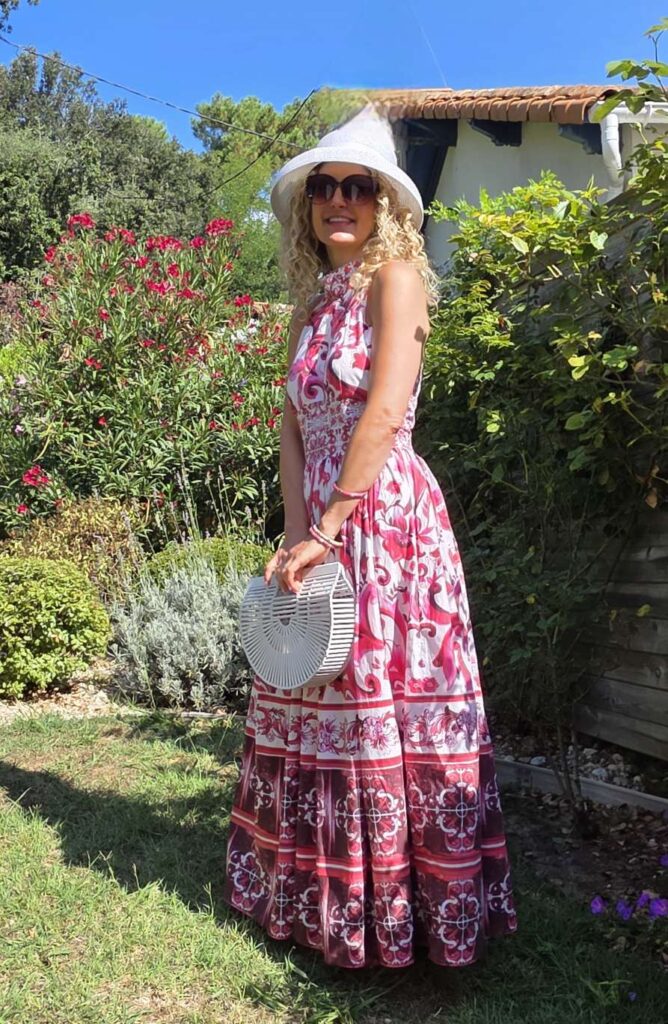
Pattern Used: for the bodice, Simplicity 8645 (S8645), which is a 1950’s vintage re-edited top pattern. There are 4 different top versions (a bargain for a single pattern), I made version A but replaced the Peter Pan collar by a neck scarf. For the skirt I simply used two gathered rectangles (fabric width x length required, around 90cm here). I much prefer circle skirts to gathered one, but the gathered option in the only one that works with patterned fabric like this one.
Sizing: size 10 for my UK 8/ FR 36/ US 2, this is my standard size for Vogue/Butterick/ McCall’s/ Simplicity patterns, despite the size chart telling me I should be a 12/14. I am an E cup and did not need an FBA, but this is often the case when the bust ease comes from gathers, they are simply more forgiving than darts on princess seams.
Level of difficulty: easy but a bit of patience required as the bodice is entirely lined.
Fabric used: a lightweight cotton in the most perfect Dolce&Gabbana-like print, with gorgeous vivid colours.
Changes to the pattern: for the bodice I replaced the Peter Pan collar by a self-drafted scarf collar. I should have raised the collar line and decreased the bodice length by a few cm but did not and it is not the end of the word – next time. The skirt is self drafted but frankly no rocket science here. I placed an invisible zip on the side, not to interrupt the fabric pattern.
Love rating: I am extremely pleased with this dress, it is very elegant yet comfy to wear on summer evenings.
